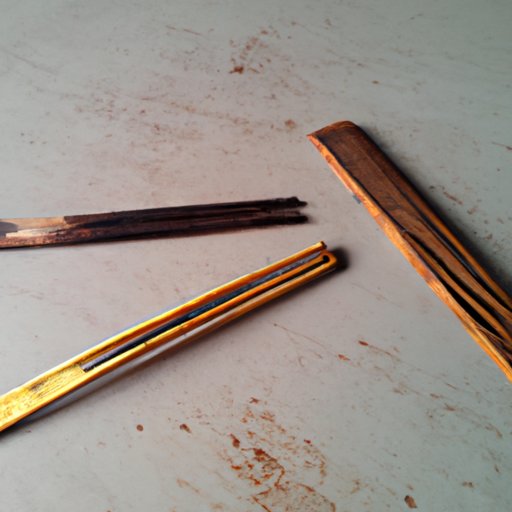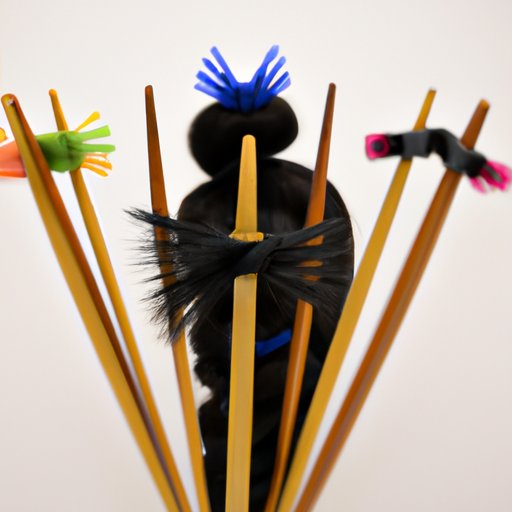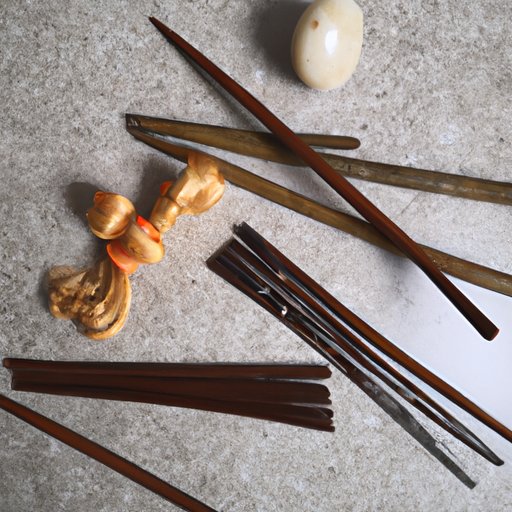Introduction
Cultural appropriation is a complex topic that has been widely discussed in recent years, with many people questioning whether certain practices should be considered inappropriate or disrespectful. One such practice that has come under scrutiny is the use of hair sticks, which have been used for centuries by various cultures around the world. This article will explore the issue of hair sticks and cultural appropriation, looking at the history of hair sticks, the implications of cultural appropriation, how hair sticks are used in different cultures today, and the impact of cultural appropriation on traditional hairstyles. It will also look at the current debate around hair sticks and cultural appropriation.

Exploring the History of Hair Sticks
Hair sticks have been used in many cultures around the world for thousands of years. In Ancient Egypt, they were made from ivory and bone and used to secure elaborate hairstyles. Similarly, in Ancient Greece, women used hair sticks to fashion their hair into intricate styles. In other cultures, hair sticks have been used to denote rank or signify marital status. For example, in Japan, married women wore ornate hair sticks known as “kanzashi”, while unmarried women wore simpler ones.
In Western culture, hair sticks were popularized in the 19th century, when they were often used to secure elaborate hairstyles such as the Gibson Girl. However, this popularity faded in the early 20th century, and hair sticks were largely forgotten until recently, when people began to recognize the cultural significance of these items.

Examining the Implications of Cultural Appropriation
Cultural appropriation is defined by Merriam-Webster as “the taking over of creative or artistic forms, themes, or practices by one cultural group from another”. It is a controversial topic, with some arguing that it can be beneficial in terms of bringing together different cultures and ideas, while others argue that it is disrespectful and can lead to the erasure of traditional cultures.
When it comes to hair sticks, there are several reasons why cultural appropriation can be problematic. First, it perpetuates the idea that certain cultures and traditions are not valuable unless they are adopted by mainstream society. Second, it ignores the historical context of certain items, which can lead to a misunderstanding of their true meaning and significance. Finally, it can lead to the commodification of certain cultures, with items being sold without any acknowledgement of their cultural origins.
Investigating How Hair Sticks Are Used in Different Cultures Today
Today, hair sticks are still used in many cultures around the world. In Japan, they are used to secure elaborate hairstyles for special occasions such as weddings, while in India, they are used to adorn traditional hairstyles such as buns and braids. In Africa, they are used to create intricate hairstyles, while in Latin America, they are used to accessorize traditional hairstyles.
However, there are potential issues with using hair sticks in a way that is not respectful to the culture it originated from. For example, some people may use them as a fashion statement without understanding the cultural significance of the item. Similarly, some people may buy hair sticks from companies that do not pay homage to their cultural origins.
Looking at the Impact of Cultural Appropriation on Traditional Hairstyles
The cultural appropriation of traditional hairstyles can have a significant impact on the way they are perceived and worn. For example, in the United States, black women’s hairstyles have long been viewed as unacceptable or unprofessional, leading to many black women feeling pressure to straighten their hair or wear wigs in order to conform to white beauty standards. This pressure has only increased in recent years, with the rise of cultural appropriation of traditionally black hairstyles such as cornrows and dreadlocks.
At the same time, there are potential benefits to preserving traditional hairstyles. For example, it can help to maintain a sense of cultural identity, as well as helping to connect people to their past and their heritage. Additionally, it can be a source of pride and empowerment for those who choose to wear their hair in the traditional style.

Analyzing the Current Debate Around Hair Sticks and Cultural Appropriation
The debate around hair sticks and cultural appropriation is ongoing, with many people arguing both for and against it. On the one hand, some people argue that cultural appropriation can be beneficial in terms of bringing different cultures together and increasing appreciation for traditional hairstyles. On the other hand, many people argue that cultural appropriation is disrespectful and can lead to the commodification of certain cultures.
Ultimately, there is no easy answer to this debate, and it is important to remember that there are pros and cons to both sides of the argument. Ultimately, it is up to individuals to decide what is right for them and to make sure that any decisions they make are respectful of the culture they are appropriating.
Conclusion
In conclusion, hair sticks have been used in many cultures around the world for thousands of years, and the issue of cultural appropriation is a complex one with no easy answers. It is important to remember that there are potential issues with using hair sticks in a way that is not respectful to the culture it originated from, and that cultural appropriation can have a significant impact on traditional hairstyles. Ultimately, it is up to individuals to decide what is right for them and to make sure that any decisions they make are respectful of the culture they are appropriating.
In order to respect hair stick culture, it is important to research the origin and significance of the item, as well as making sure to purchase items from companies that pay homage to its cultural origins. Additionally, it is important to be aware of the potential implications of cultural appropriation and to make sure any decisions are made with respect and consideration.
(Note: Is this article not meeting your expectations? Do you have knowledge or insights to share? Unlock new opportunities and expand your reach by joining our authors team. Click Registration to join us and share your expertise with our readers.)
